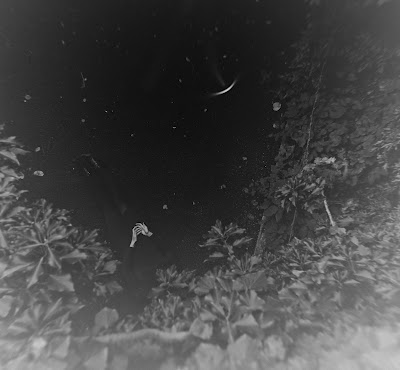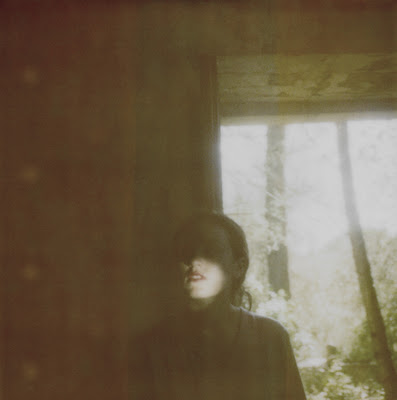A series of talks by Michael Stone about chapter 3 of The Yoga Sutra a text written by mysterious author(s) often named Patanjali in the second century. Notes by MH include reveries and imaginings. Centre of Gravity Fall 2011. www.centreofgravity.org
Bearing Witness
During the five day intensive, we’ve been creating practices so that we can do the Sandokai poem, not just study it like a faraway object of lineage veneration. We’d like to do it like a new dance step, for example blindfolding partners and being led around (so that the dharma glasses could teach us how to see). Or visiting the law courts and the mall while practicing non-separation. Bearing witness. In some of the courtrooms there was no room to sit, so we sat in the rows of the accused. We’re all in this together.
I saw an older brother take the stand and say, “Yes, I can look after my younger brother.” “Can you raise $1,000 for him?” “Yes, I can.” There he waits, standing silently in the glass box. The judge is “his highness” turning everyone else into his lowness, and the lowest of all is the man standing in the glass box, the accused, the absent, nearly silent centre around which this day is turning. Then the man’s mother swore that he could come home and that she would put up money for him. One lawyer said it would be better for society if he could go home and be a productive citizen. And I wanted to believe that. I wanted him to be able to go home again. And then I found out what he did. One assault charge. Another assault charge. Another assault charge. And then I heard what his victims looked like after he was done with them, I thought no, he’s not ready to be in the world, he needs to go to jail. Just as you get into one position the other position shows up.

Left Foot, Right Foot
The Sendokai says: within light there is darkness – don’t try to understand the dark in the light. Don’t go looking for it, don’t worry, it will come, the way the left foot follows the right. Within dark there is light – don’t go looking for it, it will come just the same way. My friend Sebastiene has a small biz that is up and running and things are ok, some weeks it’s more than ok, and when she lays this out for her Tibetan Buddhist friend they nod, yes, yes, and then brightly out loud, “Bad times coming!” Because the bad times will surely follow the good ones, the way a right foot follows the left.
How to arrive in court and feel samadhi (integration) – and then feel separation? And not being half way in either of them, but being fully in the dark when you’re in the dark, and being fully in the light when you’re in the light.

Yoga Sutra Chapter 3, line 3
Svarupe shunya samadhi (self form emptiness integration)
The commonplace translation is that emptiness is like this place you go when you have a deep meditation practice. But for many it can simply be a mask, or a technique for disassociation. My father was a very intense guy so when he got his motor running I would just exit the room, he’d be on and on and I would pull up the vacancy sign. When I discovered meditation I thought it was really great, I thought the point was to enter into all this blankness and emptiness – tuning out what I felt, all sensation and tactility and feelings. From a Buddhist perspective this kind of detachment is based in fear.
Empty
The world shu literally means to swell. It’s also a word that can indicate pregnancy. Kazuaki Tanahashi translates it as boundlessness, in part because in Japan shu means sky. Today we think of sky as a thin and fragile strip of atmosphere, but in fourth century Japan the sky was vast and nothing could cover it.
Self form is boundless. How do boundlessness and emptiness go together? Emptiness is a tool to look at your experience. Emptiness is not a thing – it’s a lens to see that what you’re looking at is interdependent and impermanent. It doesn’t have a material substantiality. For example this wall and this ceiling inter-are, they are parts of each other, there’s no telling where one starts and another begins. But instead of saying “Be careful about that interdependent process,” we say, “Watch the wall.” The wall doesn’t have an essential thingness, it’s only a wall in relation to the ceiling and the floor. It’s a process.

Again and again, The Yoga Sutra points out that our thoughts, sensations, our experiences of pain, are not as real as we think they are. Even those corners of our psyche that we only mention quietly to ourselves – those bits of sadness or grief – are not for forever. When you come out of the first phase of mourning it can be scary to feel or touch that place again, oh god, please let it not all be happening again. As you come closer to a deeper emotion, you can see that there is some movement in them – they’re more cloud-like, instead of being large, immovable blocks of matter. But the mind says: that’s me! That’s real!
Patanjali says that svarupe (self form) or the watcher is inseparable from what is being watched, from the field. There’s a bonding between the one who is seeing and the field. The people in the courtroom are you – we are all each other. So how can you not love yourself for being in this world, in this arrangement you name as yourself?
The function of emptiness in practice is equivalent to love. Love is emptiness working through the two of you, or you and the field, or you and the entire courtroom, at the same time. When stillness starts to happen there’s a spaciousness between thoughts, there’s a gap that occurs before the next compulsion arises. That gap is the place of non-harming – these are the roots of the non-harming impulse. It’s a place of not sticking to things. When what you do and what you’re noticing is the same thing, that’s enlightenment. Then you can love this part of the universe. Then you can love yourself.
Dalai Lama
A student did an interview with the Dalai Lama. She really suffered from needing approval, and at a recent silent retreat, where folks were careful to guard the sense doors of the eyes, she found this unseen/unspoken role difficult to play, because she needed someone else to say yes. She laid her troubles out to the Dalai Lama and he replied, “Once you’re over fourty, if you’ve made it this far – then the universe approves of you!” Now you can go out and approve of others.
You can take the place you’re wounded, if you’ve had the faith/confidence and the depth of practice to open to those difficult feelings, and then the wound isn’t what separates you, instead, it connects you to all the other wounds that we want to get rid of, but we can’t.
Stories
At another level shunya (emptiness) is a tool used against frameworks of religion, or whatever we would like to raise to the status of the forever and unchanging (my pain, my dad, my jealousy). Buddhism isn’t so interested in how we came to be, or questions of the after life, it’s a phenomenological inquiry. How do you experience the world? What is this? Emptiness cuts against ideas that you want to count on, it shows them to be insubstantial, fleeting, impermanent. Amongst its questions: what does the story of God do for you and what does it shut down?
Buddhism doesn’t say that stories or myths don’t matter, or that they’re not important. Instead it insists that sometimes we don’t see our thinking. We often mistake our thoughts for ourselves, or solidify thoughts, turn these castles in the air into solid ground. Stories are necessary and powerful and transforming, but we don’t have to build temples out of them. Nagarjuna put it this way: don’t pick up emptiness like you pick up a snake. Too often we think of emptiness as a thing.
What is samadhi? Using this lens of emptiness to see that nothing is fixed. Your hurt, your pain, your joy is not fixed. Maybe there should be a nerf bat that you can wallop yourself with labeled emptiness. Like The Heart Sutra it would say no, no, no.
When you inhale the world comes in, when you exhale the world leaves. Sometimes it’s necessary to multiply your experience by zero. To add nothing to it, not even a residue of preference. Then you get love, the ability to drop your view and feel interconnected. We suffer because we hate what shows up, or we receive something we didn’t want, or we lose something we thought we possessed. We feel we’re lacking but the truth is we never had it in the first place. We have nothing to lose but our viewpoint.
What if you could turn up the volume of every way we are interdependent? Instead of the steady chatter of magistrates and judges in the courtroom we could hear the sounds of blood rushing through their veins, or their breathing become louder than their speech. What would it take for us to quiet the stories we enjoy punishing and distracting ourselves with, so that interdependence is more available?
Beauty
Buddhism touches a place beneath psychology, call it a mindology. It recovers the idea of psyche from science, restoring it to its Greek roots, psyche-ology means the logic of the soul. In the hands of science it has become, at least in part, a way to tell stories, or re-tell stories, that consolidate identity. In the Greek myths, Psyche was a lover of beauty. When you’re connected, or feeling interconnection, you move towards beauty. Something about beauty pulls the mind. It turns me into you and me, into us. It dissolves the seer and the seen. Beauty allows the world to look back, it allows us to be seen, and the dropping of this guard, this quality of vulnerability, this quality of opening like a question mark, this is the heart of the practice.
We’re part of a web that is bigger than our psyche. When we’re interconnected, we’re connected to beauty, and to the values of non-harming. When I undertake to be connected to stillness, to sitting still, the world appears more beautiful. Thich Nhat Hahn says that when you’re practicing the dharma, you’re more beautiful. When I practice, I can see the futility of sticking to things, of putting myself into corners. I can see that, finally, there are no corners. And then love arrives. Unlike money, love is unlimited. It is as unlimited as the sky, as boundlessness. Our compassion, our tenderness, can grow to include everything.


